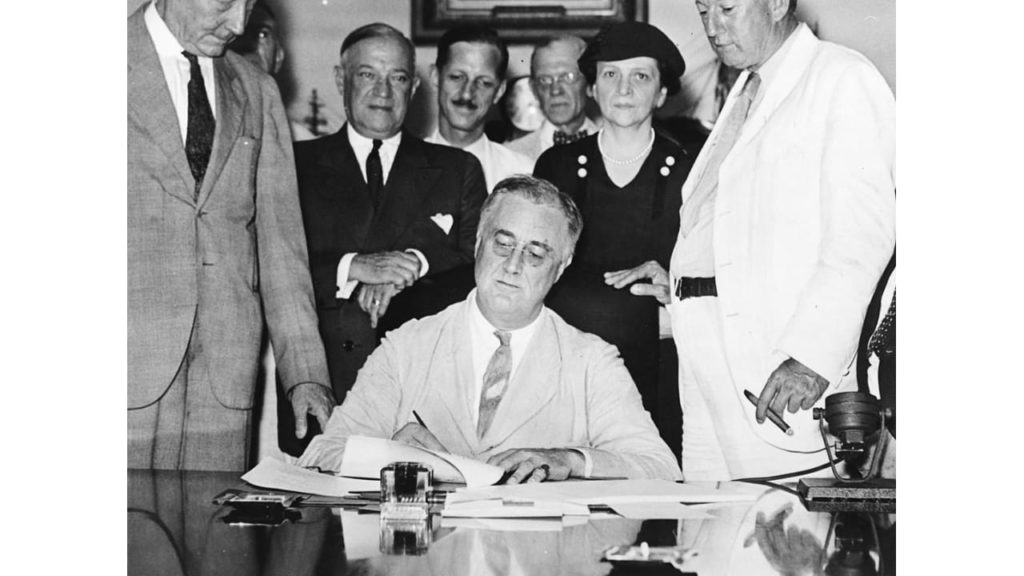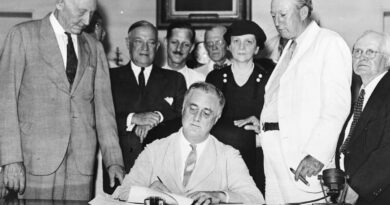It’s Been 86 Years Since the Social Security Act Was Passed. Is It Time for an Overhaul?
President Franklin D. Roosevelt signed the Social Security Act into law on August 14, 1935. It addressed the issue of economic insecurity in America following the Great Depression by offering several provisions for general welfare AND creating a social insurance program designed to pay retired workers (age 65 or older) a continuing income after retirement. That second part is what led to the Social Security program we know today.
This article from the Social Security Administration explains a bit about the history of the Social Security Act, how the program has evolved over time, and what needs to be done to protect it for the future. For a more detailed explanation, check out this deep dive into its history.
Social Insurance Was the First Step
The Social Security Act contained two major provisions relating to the elderly: Title I-Grants to States for Old-Age Assistance, which supported state welfare programs for the aged, and Title II-Federal Old-Age Benefits, which was the new social insurance program. Originally, benefits were to be paid only to the primary worker when he or she retired at age 65. Benefits were to be based on payroll tax contributions that the worker made during his or her working life.
The new social insurance program was significant because it sought to address the long-range problem of economic security for the aged through a contributory system in which the workers themselves contributed to their own future retirement benefit by making regular payments into a joint fund. It was different than the welfare benefits provided under Title I of the Act and from the various state “old-age pensions.”
Social Security numbers were assigned as a way of tracking each worker’s contributions to the system and the Social Security Trust Funds were established to hold revenues collected through Federal Insurance Contribution Act (FICA) payroll taxes.
Change Can be Good
When signing the Social Security Act 86 years ago, President Roosevelt acknowledged that it was a work in progress by saying. “This law, too, represents a cornerstone in a structure which is being built but is by no means complete.” Over the years there have been many amendments.
The original Act provided only retirement benefits, and only to the worker. The 1939 Amendments made a fundamental change in the Social Security program by adding dependents benefits and survivors benefits. This change transformed Social Security from a retirement program for workers into a family-based economic security program. The 1939 Amendments also increased benefit amounts and accelerated the start of monthly benefit payments.
In 1950, major amendments were enacted to increase benefits for existing beneficiaries by establishing cost-of-living adjustments (COLAs), which dramatically increased the value of the program for future beneficiaries. Other later amendments brought about disability benefits and Medicare, created the Social Security Insurance program, and provided for automatic increases in the earnings subject to Social Security taxes and an automatic adjustment in the wage-base used in calculating benefits.
More modern changes include the “The Senior Citizens’ Freedom to Work Act of 2000” which eliminated the Retirement Earnings Test (RET) for those beneficiaries at or above Normal Retirement Age (NRA). This was a historic change in the Social Security retirement program, because from its beginning in 1935 retirement benefits had been conditional on the requirement that the beneficiary be substantially retired.
Are We Due for an Overhaul?
A house built in the 1930’s would need a major overhaul today – new plumbing and electric lines at the very least and probably some aesthetic changes as well. The same holds true for the Social Security Act. Many things have changed and today’s retirees have different needs and concerns than their predecessors in the 1930’s.
The Seniors Trust supports the Social Security Expansion Act. This landmark piece of legislation will: increase benefits, ensure a strong and long-lasting Trust Fund, and guarantee that every retired worker receives adequate Social Security benefits and a fair Cost-of-Living Adjustment (COLA). It’s not too much to ask for. In fact, it’s what they deserve.
When President Roosevelt signed the Social Security Act he admitted that it was “by no means complete”. Tell today’s politicians that it’s time they finish what he started and enact the Social Security Expansion Act.




